




OUR BEST EVER OFFER - SAVE £100/$100
JOIN THE WORLD'S LEADING PROFESSIONAL DEVELOPMENT PROGRAMME
- 12 months membership of Elite Soccer
- Print copy of Elite Player & Coach Development
- Print copy of The Training Ground
You are viewing 1 of your 1 free articles
Defensive understanding through heading
Use this session to improve understanding between your defenders and goalkeeper. It teaches them how to cope with long aerial deliveries, be they from the opposition keeper or outfield players and highlights the importance of cover when defending.
| Area | Up to a full pitch |
| Equipment | Balls, goals |
| No. of Players | Up to 11v11 |
| Session Time | Practices and Progressions 10mins each, Game 20mins |
This session is about encouraging understanding between the back five (four defenders and a keeper), and teaches them how to cope with long aerial deliveries, be they from the opposition keeper or outfield players. The aim here is to improve heading technique, and to highlight the importance of cover when defending.
It’s important to practise this because keepers deliver more balls into the opponents’ middle or final third than any other player, being in contact with the ball up to 60 times per game.
This practice is successful every time a goal isn’t scored or an opposition restart isn’t awarded.
What do I get the players to do?
Heading Clear
Setting up as shown, the server delivers a high ball for reds to defend under minimal pressure from blues (1). We encourage communication, cover and good technique – namely heading away using height, distance and aggression.
Players must react to where the headers go – so moving up, working as a group, squeezing and holding.
Re-run 10 times, then swap team roles.
1

Coming Short
Now attackers are active, and one drops deep to receive, so centre-backs must have the space behind them covered by the wing-backs (2). This prevents a gap appearing in the ‘primary danger’ area, where a striker could run onto a flicked header for a 1v1 with the keeper.
2
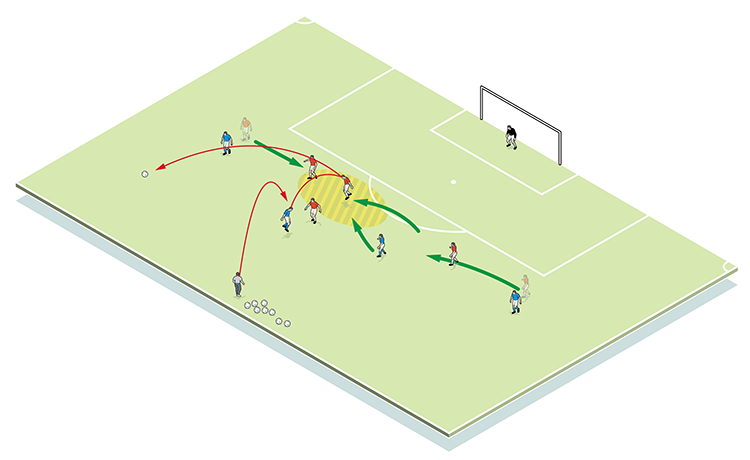
Allowing ‘secondary danger’
With full-backs plugging the gap, they are of course exposing the wings to attacks. Although not ideal, we regard this as ‘secondary danger’, because the attacking team still has a lot to do to score from here, and that’s unlikely if we defend properly (3).
3
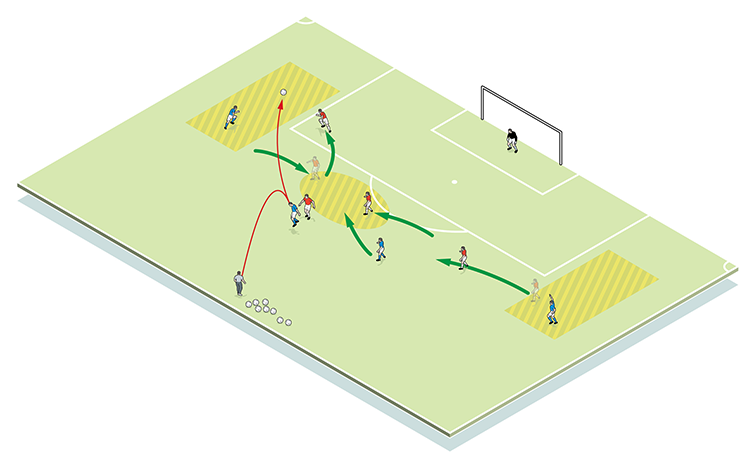
What are the key things to look out for technically/tactically?
Central defenders must adopt an aggressive attitude, with all five players working to remove the primary danger whilst staying in line as a group. Good communication (for instance, in staying high to allow the ball through to the keeper, or dropping deep to head) is essential (4).
Wing-backs must be brave enough to get around the back of the central defenders to cover, even if it means leaving space out wide.
Wide attackers must not come infield and affect the centre-forwards, whose job it is to attack every ball.
4
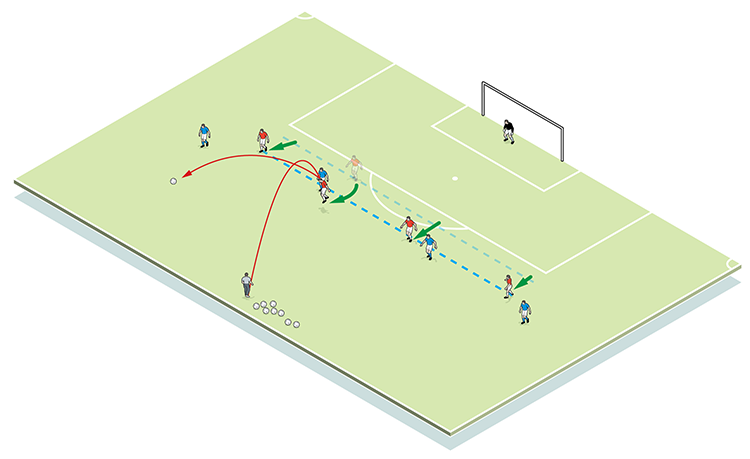
How do I progress the session?
To progress, bring in two attacking midfielders. Two touch, they cannot go beyond the ball once it’s been served in, but can pick up second balls or knockdowns (5).
5
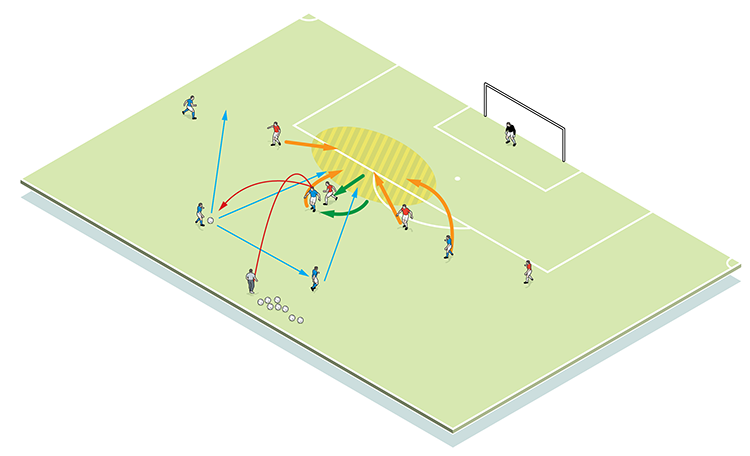
We can also bring in another line of strikers, therefore rotating back fours in attacking waves.
Finally, add an opposition keeper to deliver a variety of crosses into different areas (6).
6
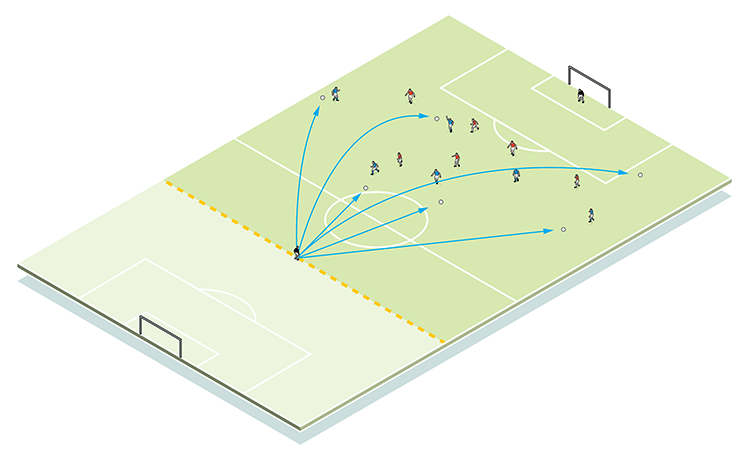
For a full-pitch game situation, play until the ball is dead then restart with either keeper.
Related Files
Editor's Picks
Attacking transitions
Deep runs in the final third
Using the goalkeeper in build-up play
Intensive boxes drill with goals
Penetrating the final third
Creating and finishing
My philosophy
Pressing initiation
Compact team movement
Coaches' Testimonials

Alan Pardew

Arsène Wenger

Brendan Rodgers

Carlos Carvalhal

José Mourinho

Jürgen Klopp

Pep Guardiola

Roy Hodgson

Sir Alex Ferguson

Steven Gerrard
Related
Coaches' Testimonials

Gerald Kearney, Downtown Las Vegas Soccer Club

Paul Butler, Florida, USA

Rick Shields, Springboro, USA

Tony Green, Pierrefonds Titans, Quebec, Canada
Join the world's leading coaches and managers and discover for yourself one of the best kept secrets in coaching. No other training tool on the planet is written or read by the calibre of names you’ll find in Elite Soccer.
In a recent survey 92% of subscribers said Elite Soccer makes them more confident, 89% said it makes them a more effective coach and 91% said it makes them more inspired.
Get Monthly Inspiration
All the latest techniques and approaches
Since 2010 Elite Soccer has given subscribers exclusive insight into the training ground practices of the world’s best coaches. Published in partnership with the League Managers Association we have unparalleled access to the leading lights in the English leagues, as well as a host of international managers.
Elite Soccer exclusively features sessions written by the coaches themselves. There are no observed sessions and no sessions “in the style of”, just first-hand advice delivered direct to you from the coach.






